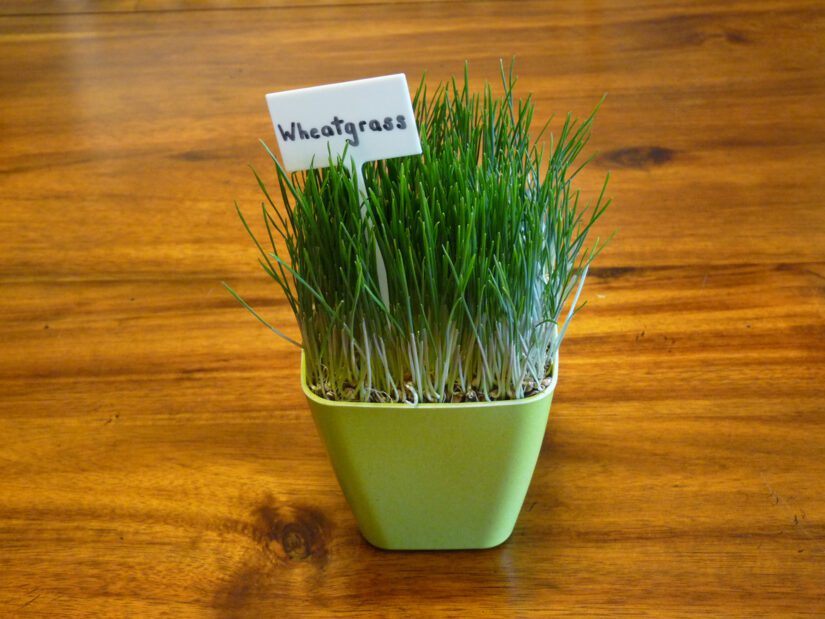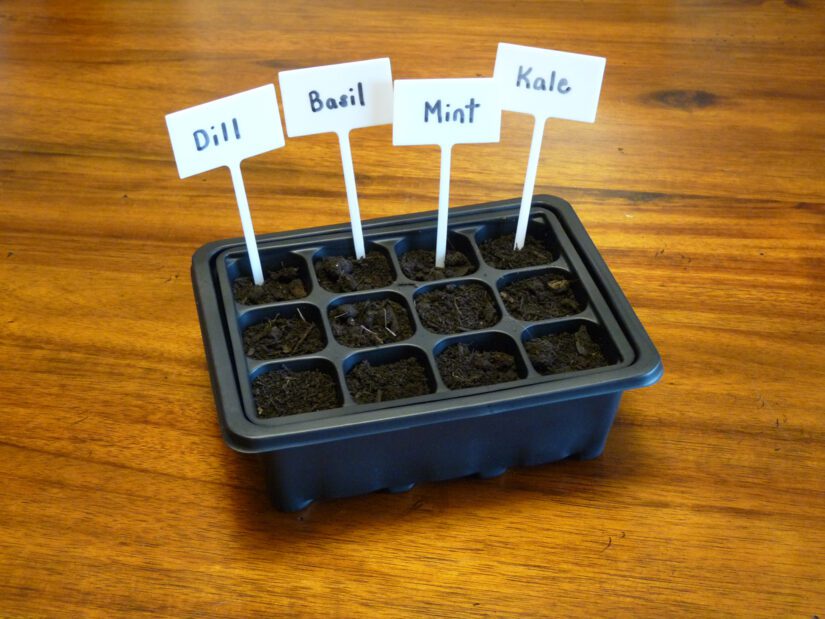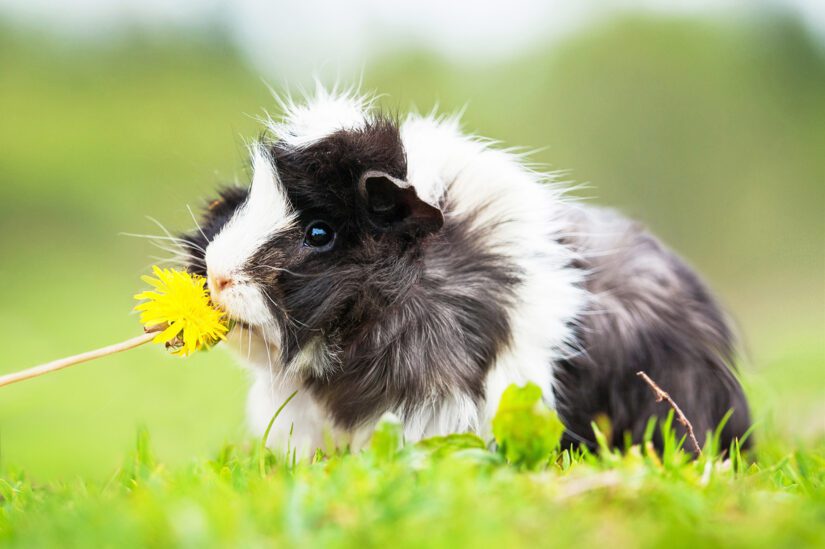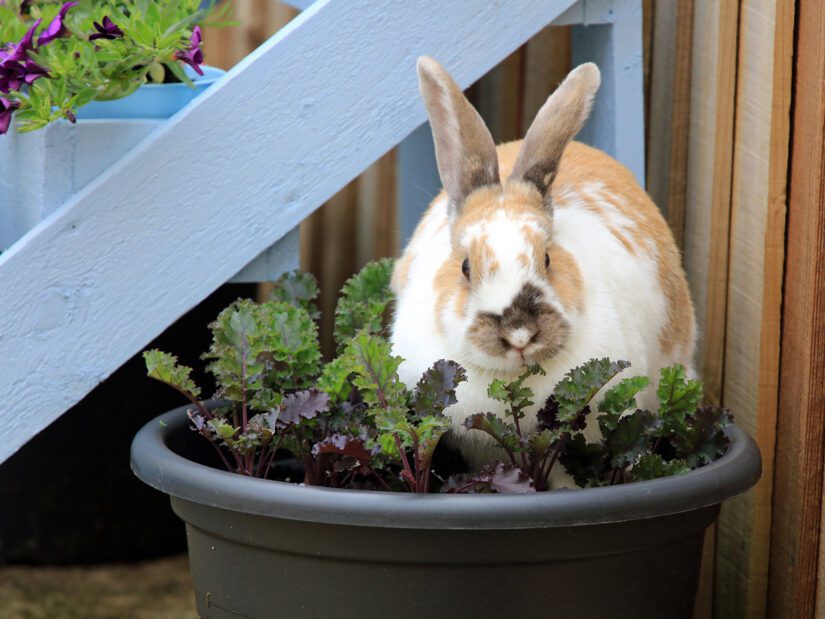Small animals such as rabbits and guinea pigs love fresh greens to eat. Why not stretch that food budget a little further by growing your own, right at home?
Fortunately, you don’t need a ton of space to get gardening — a balcony, a porch or even a windowsill will do. Herbs and dark, leafy greens are a good place to start.
Here are some rabbit and guinea pig favourites:
Wheatgrass
Once planted, wheatgrass seeds will sprout quickly and be ready to harvest in about six to eight days. Clip off what you need, and the grass will grow back a second time. Indoors, wheatgrass can be grown at any time of year.
You can also share wheatgrass with your cats!

Kale
Kale is a good source of vitamin C, which is something guinea pigs require in their diet. It prefers well-drained, fertile soil and plentiful, consistent moisture. Once the plants mature, pick leaves from the bottom up as you need them.
Kale is cold-hardy, so it can be grown outdoors in the winter too.
Mint
Mint is an easy herb to grow, and it smells delicious! Note that it spreads easily and can take over a garden, so you might want to stick to growing it in a pot.
Mint does best in partial shade in rich, moist soil. Clip off leaves or sprigs as you need them, and the plant will grow right back.

Dandelions
That’s right — dandelions! Small animals love them, and growing them is a breeze. Use a pot if you’re not keen on the idea of your garden being taken over by these cheerful yellow flowers.
When dandelions are in the white puffball stage, take the seeds and press them gently into the soil. Keep the soil moist. Sow some every two weeks or so for a constant supply of tasty leaves and flowers (both are edible!).

Romaine
Did you know that you can easily re-grow romaine lettuce indoors? All you need is the bottom part of the head. Rather than composting it, just place it in a dish of shallow water about half an inch deep. Place the dish on a windowsill and change the water every one or two days. It will sprout quickly.
The lettuce will probably max out after about ten days. While it’s never going to be as full as the original head of lettuce, it’s definitely enough for another meal for your pets. It’s like bonus lettuce!
Of course, you can always grow romaine outdoors too. Lettuce does best in cool weather in the spring and fall, but it can also be grown in the summer and all winter-long in milder regions. Just remember to water it regularly or it will develop a bitter taste. You can pick individual leaves or harvest entire heads.

Some words of caution
While rabbits and guinea pigs love fresh greens, it’s important to introduce any new foods one at a time. Keep an eye out for soft or loose poops, which can be a sign of digestive upset. As your pets get used to these new additions to their diet, you can gradually increase the amount you feed.
Of course, it’s also important to avoid using chemicals to treat the soil and plants because they can be toxic. Remember to rinse the greens well before feeding, too.
Help your pets, help the planet
Gardening is not only a great way to help feed your pets, it’s good for the environment too. Vegetables and herbs can attract beneficial insects, including important pollinators such as bees and butterflies.
Learn more about creating a bee-friendly garden.
